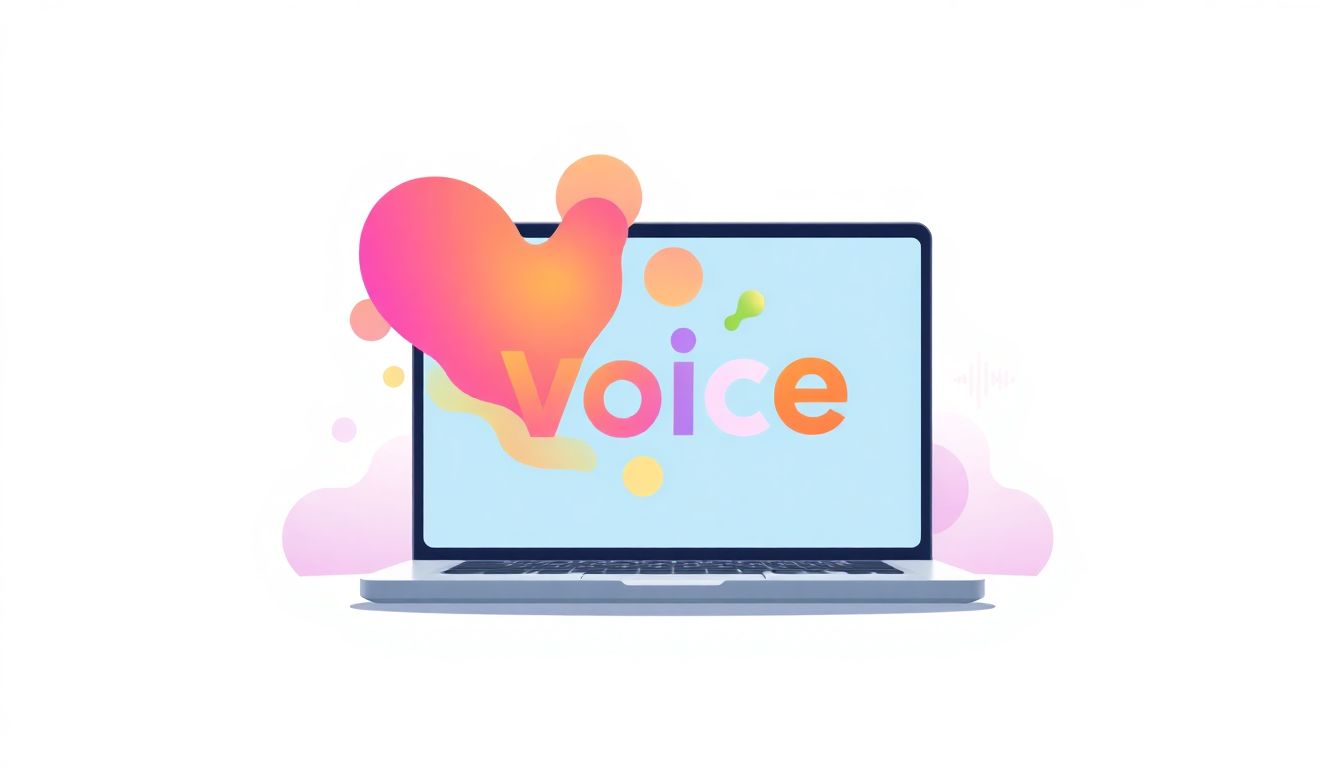Crafting a unique brand voice can feel like trying to find a needle in a haystack. With so many brands out there, figuring out how to stand out and sound authentic can be daunting. I get it—there’s pressure to connect with your audience in a way that resonates.
But what if I told you that ChatGPT could be your secret weapon? Stick around, and I’ll show you how this nifty tool can help you shape and refine your brand voice, making it quirky, relatable, or even a bit cheeky—whatever reflects your brand’s true personality.
We’ll explore how to identify your brand’s traits, key elements of a strong voice, and much more. By the end, you’ll have actionable tips that’ll transform the way you communicate with your audience!
Key Takeaways
- ChatGPT can help you craft a unique brand voice by identifying your brand’s personality and values.
- Use specific prompts to guide ChatGPT in generating content that matches your brand’s tone.
- A strong brand voice is consistent and resonates emotionally with your audience.
- Gather feedback to test and refine your brand voice continually for better connection.
- Avoid common mistakes like inconsistency and vague prompts to ensure effective branding.
- Create clear brand voice guidelines and regularly train your team to maintain consistency across platforms.

How to Use ChatGPT to Create a Unique Brand Voice
Crafting a unique brand voice with ChatGPT is all about leveraging the power of AI to define your brand’s identity.
Start by understanding your brand’s core values and personality traits, then use that information as a foundation for your prompts.
Here are a few prompts to help guide your ChatGPT interaction:
- “Generate a list of adjectives that describe my brand’s personality, which focuses on innovation, reliability, and friendliness.”
- “Create a brand voice guideline for a sustainable fashion brand that resonates with millennials.”
- “Draft a brand manifesto for a tech company that emphasizes community and environmental responsibility.”
This way, you can directly shape how your brand communicates with your audience and stands out in the crowded marketplace.
Identifying Your Brand’s Personality Traits
Identifying your brand’s personality traits is crucial for tailoring your messaging effectively.
Consider the emotional responses you want to evoke in your audience; are you aiming for trust, excitement, or inspiration?
Start by creating a list of traits you believe represent your brand.
Once you’ve identified those traits, use prompts like the following with ChatGPT:
- “What are three defining personality traits for a playful coffee shop brand?”
- “Describe the emotional tone for a luxury skincare line targeting women aged 30-50.”
- “Outline the characteristics of a tech-savvy brand aimed at Gen Z.”
With these insights, you can ensure that your messaging aligns with your audience’s expectations and fosters a deeper connection.
Key Elements of a Strong Brand Voice
A strong brand voice is a harmonious blend of consistency, tone, and personality.
First, your voice must be consistent across various platforms; this builds familiarity and trust among your audience.
Then, consider the tone—should it be authoritative, casual, or somewhere in between?
Here are some elements to think about:
- “Generate examples of a consistent brand voice across social media channels.”
- “What tone should a financial advising firm adopt to attract young professionals?”
- “Define the key messaging points for a non-profit organization focused on mental health advocacy.”
These inquiries can lead ChatGPT to generate tailored content that resonates with your specific audience while keeping your brand identity intact.
Examples of Brand Voices Generated by ChatGPT
Looking at real-world examples of brand voices generated by ChatGPT can provide valuable insights into how to shape your own.
For instance, a youthful coffee shop brand might adopt a fun and vibrant voice, while a legal service might voice authority and professionalism.
To see these differences in action, you can prompt ChatGPT to generate specific examples:
- “Create a brand voice example for a playful pet store targeting pet lovers.”
- “Generate a brand voice description for a high-end travel agency that emphasizes luxury and exclusivity.”
- “Provide an example of a consistent brand voice for an online educational platform focusing on accessibility.”
These examples will not only inspire you but also illustrate how varying tones align with diverse target audiences.

Step-by-Step Guide to Writing Prompts for Brand Voice
Crafting effective prompts for ChatGPT is key to developing a compelling brand voice.
Start with clarity; know what output you want from ChatGPT.
Here’s a simple step-by-step method to write prompts that generate useful content:
- Define Your Objective: Determine what you want to achieve, like crafting a specific message or feeling.
- Be Specific: The more details you provide, the better ChatGPT can understand your needs. Use descriptive language.
- Test Variations: Experiment with different phrasings to see which gets the best results.
Here are some prompts to get you started:
- “Draft a brand email welcoming new subscribers, using a friendly and approachable tone.”
- “Outline a social media post for an eco-conscious startup that emphasizes sustainability and community.”
- “Create a tagline for a fitness brand that inspires motivation and determination.”
These prompts can be modified based on your brand’s attributes, helping you refine your voice effectively.
Testing and Refining Your Brand Voice with ChatGPT
Testing and refining your brand voice is critical to successful communication.
First, gather feedback from real users to see how they perceive your brand voice.
You can use ChatGPT to simulate audience interactions or brainstorm ways to ask for feedback.
Try these prompts to kick off the testing phase:
- “Draft a survey question that asks my customers about their impression of our brand voice.”
- “Generate a response to a negative comment in our brand voice, focusing on empathy and resolution.”
- “Create an example of a customer testimonial that reflects our ideal brand voice.”
After gathering insights, iterate on your prompts or create new ones to refine your voice until it resonates well with your audience.
Common Mistakes to Avoid in Brand Voice Creation
It’s easy to slip up when developing a brand voice, so being aware of common mistakes can save you time.
Avoid writing prompts that are too vague; specifics lead to better responses.
Here’s a list of missteps to watch out for:
- Inconsistency: Using different tones across platforms can confuse your audience.
- Ignoring Feedback: Not taking customer feedback into account can hinder your voice evolution.
- Overcomplication: Using jargon may alienate your audience; keep it simple and relatable.
To sidestep these errors, regularly review your brand communications and adjust your prompts as needed to maintain clarity and consistency.
Tips for Maintaining Consistency in Brand Voice
Consistency is key in creating a recognizable brand voice.
Document your brand voice guidelines; this helps keep everyone on the same page.
Here’s a simple approach to maintain that consistency:
- Develop Clear Guidelines: Outline your brand’s tone, language style, and messaging principles.
- Regular Training: Ensure that everyone who communicates on behalf of the brand is familiar with these guidelines.
- Use Checklists: Create a checklist for writers and marketers to refer to when creating content.
Use these prompts to reinforce consistency:
- “Create a content calendar prompt that includes key messaging points for the month.”
- “Draft an internal memo that reminds the team of our brand voice guidelines.”
- “List ten keywords that capture the essence of our brand voice to guide future content.”
These steps will help you keep your brand voice uniform across all channels.

Benefits of Using ChatGPT for Brand Voice Development
Using ChatGPT for brand voice development offers numerous advantages that can streamline your branding process.
One of the main benefits is efficiency; you can generate ideas quickly without lengthy brainstorming sessions.
ChatGPT allows for flexibility, quickly adapting to different tones and styles to suit your brand’s needs.
It can also inspire creativity by suggesting unexpected angles and phrases that might not have occurred to you.
To help you leverage ChatGPT effectively, use these prompts:
- “List five benefits of using AI in developing a brand voice.”
- “Generate ideas for a promotional campaign for a wellness brand using a calm and reassuring voice.”
- “What are the advantages of maintaining a consistent brand tone across platforms?”
In short, using ChatGPT not only saves time but can enhance the overall quality of your brand voice.
FAQs
Start by analyzing your target audience and defining key adjectives that represent your brand. Consider using ChatGPT prompts to brainstorm traits, ensuring alignment with your brand values and mission.
A strong brand voice is defined by clarity, consistency, and authenticity. It should resonate with your audience, reflect your brand personality, and stay adaptable to various content types while maintaining core messaging.
Use ChatGPT to generate sample content based on your prompts. Gather feedback from stakeholders and your audience, then refine language, tone, and style until it aligns perfectly with your desired brand voice.
Common mistakes include inconsistency in tone, neglecting audience preferences, and overcomplicating language. Avoid these pitfalls by sticking to clear guidelines and regularly revisiting your brand voice to ensure alignment with changing dynamics.
